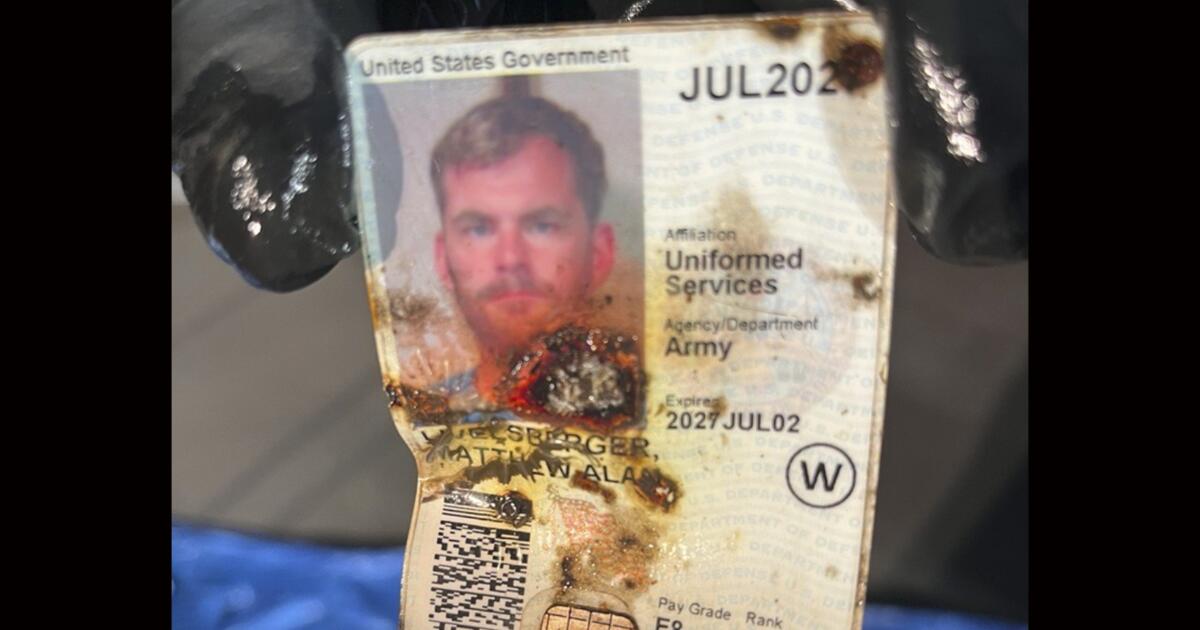New York
Roz Chast Knows You’ll Always Regret Leaving the City for the Suburbs

Roz Chast, across decades worth of her cartoons for The New Yorker as well as her own books, most notably the classic “Can’t We Talk About Something More Pleasant?” has proved herself to be one of the funniest and most acute observers of modern urban living’s insanities and anxieties. Now she has turned her gaze away from the streets and characters of her beloved New York City and toward her own sleeping mind. Chast’s forthcoming book, “I Must Be Dreaming,” is a collection of cartoons and written observations about her own dreams, others’ ideas about dreams and, broadly speaking, wiggy stuff related to dreams. But Chast is Chast, and the sleeping world she depicts is only somewhat more absurd — and equally as funny and profound — as waking life. “There’s so many different ways to look at dreams,” says Chast, who is 68. “But, for me, the biggest question is probably why do we dream at all?”
I guess when I say “useful,” I’m thinking of catharsis or working out your issues. For me, it’s more making sense of the world around you. I don’t think that’s the same as catharsis. Trying to understand who you are, what are your — I hate to use the word “values.”
Why do you hate the word values? I don’t know, I don’t know, I don’t know.
Artwork from Chast’s book “Can’t We Talk About Something More Pleasant?”
From Roz Chast and Bloomsbury
You’re talking about death? Woo! Oh! No. What’s that word that you just used? Deaf? Neth?
The idea of death or your own death is too much to even hear about? No, it’s actually kind of obsessive. I don’t know how we stop thinking about it. When you’re 4 or 5 and you learn about it, it doesn’t make any sense at all, the idea that you’re just not here. It’s a kind of nonexistence that we can’t even conceptualize. As I get older, I think about it more and more because it seems less and less abstract. People you know start to die. Not that that means it’s going to happen to me. [Laughs.] Because it’s really not, but still.
I would have thought that working on the book about your parents’ deaths would have made you a little more comfortable with the idea. [Sighs.] Not really. It’s still a giant mystery. It’s something every single person has to deal with. I can’t even say “come to terms with.” Some enlightened swami who’s transcended the binary of being alive and being dead, maybe they have it together about death, but not me.
“When you’re four or five and you learn about it, it doesn’t make any sense at all, the idea that you’re just not here.”
Roz Chast
“Snack”? Just “snack.” “Roz, will you bring ‘snack’ next week?” God, the cut up oranges. It’s horrible. Sometimes there would be fund-raisers, and I remember once I had to flip burgers or something. I had never done this. The night before, I could barely get to sleep. I was having such anxiety about it. I was like, “I know this is going to go so wrong.” I just was not cut out for these things! I could barely drive. These people made me so uncomfortable. All of it: horrible. Sorry, I wish I could be more, Yeah, it was really fun!
Did you like anything about it? Oh, here’s a fun thing: You can drive to the grocery store and put your groceries in your cart and then bring your cart all the way back to your car and then drive home. I had spent so many years lugging grocery bags. Because this was in the old days: There was no DoorDash or whatever. You’d have to go to D’Agostino’s or Fairway and schlep these giant bags of groceries, and your fingers would be stiff from holding them. So driving to the grocery store is still a great source of delight.
The cover art for Roz Chast’s “I Must Be Dreaming.”
From Roz Chast and Bloomsbury
Will my own lingering sense that somehow moving to the suburbs represents a personal failing ever go away? You have to repress it. [Laughs.] Deeply repress it. Say you’re doing it for your kids and stuff like that. Also, eventually, when you’re old and gray, maybe you’ll find a crappy one-room apartment in the city like I did. It’s great. So what if the bathroom ceiling fell in? I needed to come back to the city. A lot of it for me has to do with not having to drive. Because not driving when you live in the suburbs, or being a quasi driver — I have a lot of anxiety about it, and when I’m in the city I can go anywhere I want. I feel free. I feel like an actual grown-up.
What is it about driving? Ugh! There’s the car itself: tires falling off, a blow out, a car exploding. One time I was driving and the front hood started rattling and the whole drive I pictured the hood of the car flying up and then my crashing and not only killing myself but killing tons of people. I hate it! I hate changing lanes. I hate merging. I hate trucks. Everything about it is hateful. Also, you’re going so [expletive] fast! A slight miscalculation and it’s disaster.
Chast in front of her hand-drawn mural at an exhibit of her work at the School of the Visual Arts in New York in 2018.
Peter Garritano for The New York Times
I know you’re not particularly religious, but do you think your work demonstrates a Jewish sensibility? It’s New York as much as it is Jewish.
Where do you draw that line? Yes, where do you draw that line? But a lot of the people that I draw, they’re in an apartment. It’s like I’m not picturing them on a hiking trail. If they were on a hiking trail, they wouldn’t be very happy about it. They’d be like: “Are you sure we’re still on the trail? Do we have reception here? Did you bring the bug spray? I need more spray. Why did you bring the organic spray? It doesn’t work. Now I know I have picked up that horrible disease that you can get from mosquitoes.”
I know you’re a bit of a hypochondriac. How was the pandemic for you? I learned about sheet-pan cooking, so, in a way, I would say the pandemic was worth it.
Did it stir up any phobias? I mean, it was scary. Some of that fear I’ve probably put on a high shelf in the closet to look at later, if you know what I mean.
But do you need an external project to focus on in order to put your mind at ease? Like what about if you’re just sitting around at home and thinking? Oh, no, that’s not so good. [Laughs.] Trouble ahoy!
This interview has been edited and condensed for clarity from two conversations.
David Marchese is a staff writer for the magazine and the columnist for Talk. He recently interviewed Alok Vaid-Menon about transgender ordinariness, Joyce Carol Oates about immortality and Robert Downey Jr. about life after Marvel.

New York
Rudy Giuliani, Slow to Transfer Assets to Election Workers, Could Be Held in Contempt

Rudolph W. Giuliani, the former mayor of New York, was grilled for hours in federal court on Friday after missing several deadlines to hand over $11 million of his prized possessions to two poll workers he defamed after the 2020 election.
Mr. Giuliani avoided, for now, being held in contempt of court — a charge he has been threatened with at various times during the case and that could include jail time.
But for most of his time on the stand, Mr. Giuliani frustrated the judge and the plaintiffs’ lawyers with a spotty memory and vague answers that slowed to a crawl proceedings that were already bogged down in minutiae.
For much of the seven-hour hearing, lawyers on both sides were preoccupied with the question: Where have you gone, Joe DiMaggio?
One of the central items of Mr. Giuliani’s collection of sports memorabilia is a jersey signed by Mr. DiMaggio, the Yankees legend, that hung over the former mayor’s fireplace. On Friday, Mr. Giuliani said he had no idea where it was.
That was not the only missing Yankees great.
“There is no Reggie Jackson picture,” Mr. Giuliani said, referring to the right-fielder known as Mr. October. He had previously said in court documents that the picture would be handed over to the plaintiffs. But now, the photo didn’t exist, according to Mr. Giuliani. “The picture was Derek Jeter,” he said. “I was kind of confused about it.”
The judge, Lewis J. Liman, appeared skeptical of Mr. Giuliani’s puzzlement, noting that such a rare collectible, especially for an avowed Yankees fan, would be top of mind.
“I’m sorry,” Mr. Giuliani said in response to questions about the collectibles, and a number of other items that were expected to be found in his New York apartment. “When I looked, this is what I found.”
At the heart of the contempt charges he continues to face is whether Mr. Giuliani, 80, has been uncooperative with the handover of his personal assets, which will serve as a small down payment on the $148 million defamation judgment that he owes the plaintiffs, Ruby Freeman and her daughter, Shaye Moss. Mr. Giuliani said, repeatedly and without evidence, that the women helped steal the presidential election from Donald J. Trump more than four years ago.
The assets include a 10-room apartment on the Upper East Side of Manhattan; a 1980 Mercedes-Benz convertible; a collection of 26 designer watches; and rare Yankees collectibles, the most valuable of which might be the signed and framed DiMaggio jersey.
More than two months after a federal court judge ordered Mr. Giuliani to hand over the items, the former mayor and his lawyers contend that he has tried to comply fully, but that the process has been onerous.
“Mr. Giuliani is an 80-year-old man who has been hit by a whirlwind of discovery,” said Joseph M. Cammarata, Mr. Giuliani’s lawyer, who specialized in divorce cases before joining the defense team. Mr. Giuliani is also facing civil and criminal charges in other cases, stemming from his time as Mr. Trump’s personal lawyer.
In roughly three hours on the stand on Friday, Mr. Giuliani repeatedly responded that he could not remember details about his personal items or their whereabouts.
While pressing Mr. Giuliani, Meryl Governski, one of the lawyers for the plaintiffs, turned her attention to a checking account subject to the seizure.
“Where does it say that you turned over the cash?” she asked Mr. Giuliani, pointing out an omission in a recent letter he wrote to the court.
Mr. Giuliani, flipping through a bulky binder of materials, appeared flustered. “Are we talking about the Mercedes now?” he said.
As the hearing dragged on, lawyers on both sides seemed to test Judge Liman’s patience. After a long series of objections by Mr. Cammarata, nearly all of them overruled, Judge Liman chastised the defense.
“If you have one more speaking objection, sir, you’re going to have to sit down,” he said. “You know the rules.”
On Thursday, Mr. Giuliani’s lawyer asked if his client could appear virtually, because of medical issues related to his left knee, as well as breathing problems attributed to Mr. Giuliani’s time spent at the World Trade Center after the Sept. 11 attacks.
But Judge Liman, who had a testy exchange with Mr. Giuliani about the case in November, said he would not accept Mr. Giuliani’s testimony unless he attended in person. So the former mayor, in a dark blue suit and glasses, walked into the 15th floor courtroom on Friday with a visible limp and a dry cough.
The transfer was originally scheduled to take place in late October. But one deadline after another has passed, and lawyers for the women said they have received only a fraction of the property.
The women have yet to receive legal possession of Mr. Giuliani’s apartment, once listed for over $6 million, in part because paperwork has not been updated since his divorce from his ex-wife Judith Giuliani, according to court filings. The title to Mr. Giuliani’s convertible, which he said was once owned by Lauren Bacall, has yet to be transferred.
But Mr. Giuliani raised eyebrows on Election Day, when he appeared in the passenger seat of the same convertible, more than a week after the initial turnover deadline. On Friday, he said he has requested a copy of the title to the car three times, but has yet to receive it.
In November, Mr. Giuliani’s original lawyers withdrew from the case, citing an undisclosed professional ethics reason.
In a recently unsealed letter explaining their departure, one of the lawyers, Kenneth Caruso, a longtime friend of Mr. Giuliani, said his client was not cooperating in the discovery process related to a condominium he owns in Palm Beach, Fla., and was withholding access to his electronic devices.
The judge will determine on Monday whether Mr. Giuliani was uncooperative during the discovery process. A separate hearing will be held to discuss his turnover efforts.
Later this month, Mr. Giuliani also faces the possibility of contempt charges in a Washington, D.C., court, where he has been accused of continuing to publicly make false claims about the two Georgia poll workers.
On Jan. 16, Mr. Giuliani is expected back in court to argue that his Palm Beach condo, as well as three personalized Yankees World Series rings, should be excluded from the handover.
Outside the courthouse, at a prepared mic stand, Mr. Giuliani, who typically appeared energized and combative, demurred.
“It would be inappropriate and unwise to say a darn thing about this case right now,” he said.
New York
9 Plays to Warm Up Winter in New York

In New York, Broadway hits its winter lull in January, as Off Broadway and beyond burst into activity. If most of the tourists have gone home after the holidays, many of the visiting theater artists have arrived from all over, for the annual festivals that draw a tantalizing breadth of new work.
The venerable Under the Radar festival (Saturday through Jan. 19), now in its post-Public Theater era, is blossoming lushly again, with some of the city’s major companies participating. The Prototype Festival (Thursday through Jan. 19) has a full menu of interdisciplinary opera, while the Exponential Festival (through Feb. 2) centers local emerging experimental theater makers. There’s also the International Fringe Encore Series (through March 16), whose lineup includes “Gwyneth Goes Skiing,” one of two Gwyneth Paltrow-focused shows at last year’s Edinburgh Festival Fringe.
It’s a bountiful month, on festival stages and elsewhere. Here are nine shows worth keeping in mind.
‘Blind Runner’
In this hourlong play by the Iranian writer-director Amir Reza Koohestani, a political prisoner in Tehran asks her husband to help a young woman, who was blinded in a protest, to run a marathon in Paris. The more dangerous race is the one they undertake from there: trying to cross the English Channel through the tunnel without being hit by a train. A two-hander performed in Persian with English supertitles, and presented with Arian Moayed’s company, Waterwell, it’s about surveillance, oppression and the insistent pursuit of freedom. The critic Michael Billington called it “mesmerizing.” Part of Under the Radar. (Saturday through Jan. 24, St. Ann’s Warehouse)
‘Wonderful Joe’
The Canadian puppet artist Ronnie Burkett is a marvel to watch, manipulating populous casts of marionettes all on his own. Too seldom seen in New York, he arrives this month for a brief run of his new play, which landed on The Globe and Mail’s top-10 list of 2024 shows. The story is about an old man, Joe, and his aged dog, Mister, who lose their home to gentrification and hit the streets, approaching misfortune as adventure. This is not puppetry for little ones, though; audience members must be 16 or older. Part of Under the Radar. (Tuesday through Jan. 12, Lincoln Center)
‘Dead as a Dodo’
The company Wakka Wakka (“The Immortal Jellyfish Girl”) descends into the underworld with this sparkling puppet piece about a pair of skeletons: a dodo and a boy. Their ancient bones are in the process of disintegrating. Then, out of nowhere, the bird grows a new bone, sprouts fresh feathers — and is apparently not dead as a dodo after all. Directed by Gwendolyn Warnock and Kirjan Waage, who wrote it with the ensemble, this show is recommended for ages 7 and up. But be warned: Wakka Wakka does not shy from darkness. Part of Under the Radar. (Wednesday through Feb. 9, Baruch Performing Arts Center)
‘Old Cock‘
American history and politics are Robert Schenkkan’s dramatic bailiwick. He won a Pulitzer Prize for “The Kentucky Cycle” and a Tony Award for “All the Way.” And Brian Cox starred as Lyndon B. Johnson in Schenkkan’s most recent Broadway production, “The Great Society.” For this satire, though, the playwright teams up with the Portuguese company Mala Voadora and the director Jorge Andrade to tell a distinctly Portuguese story, pitting the rooster that is a symbol of that country against António de Oliveira Salazar, the dictator who ruled it for decades. Part of Under the Radar. (Wednesday through Jan. 19, 59E59 Theaters)
‘Grief Camp’
Eliya Smith, a master of fine arts candidate at the University of Texas at Austin whose previous forays into New York theater include the intriguingly strange, fragmented elegy “Deadclass, Ohio,” makes her Off Broadway playwriting debut with this world premiere. Directed by the Obie Award winner Les Waters (“Dana H.”), it’s about a group of teenagers in a summer cabin in Hurt, Va., confronting loss. And, yes, even this camp has a resident guitarist. (Thursday through Feb. 16, Atlantic Theater Company)
‘Show/Boat: A River’
The experimental company Target Margin Theater does not pussyfoot when it comes to re-examining canonical classics. Adapted and directed by David Herskovits, this interpretation of “Show Boat” aims to reframe the Jerome Kern and Oscar Hammerstein II musical from 1927, about the entertainers and others aboard a riverboat on the Mississippi in the late 19th and early 20th centuries. Groundbreaking in its time for its themes, including racism and interracial marriage, “Show Boat” has long been accused of being racist itself. The content advisory warns: “The production includes racially offensive language and incidents.” Part of Under the Radar. (Thursday through Jan. 26, N.Y.U. Skirball)
‘A Knock on the Roof’
The Golan Heights-based writer-performer Khawla Ibraheem plays a Gazan woman rehearsing what she will do if she hears a low-level warning bomb — a “knock on the roof” by the Israeli military — which would mean she had only minutes to evacuate her home before an airstrike escalated. Directed by the Obie winner Oliver Butler (“What the Constitution Means to Me”), who developed the play with Ibraheem, it won awards at the Edinburgh Festival Fringe this summer. Part of Under the Radar, this production moves to the Royal Court Theater in London in February. (Jan. 10 through Feb. 16, New York Theater Workshop)
‘The Antiquities’
Jordan Harrison’s new play imagines a history of the Late Human Age as told by the “nonorganic beings” who will succeed us. Starting on the night in 1816 when Mary Shelley told her ghost story, it hops through time to 2240. Building on themes Harrison contemplated in “Marjorie Prime,” it’s about what it is to be human, and whether we’ve sown the seeds of our destruction. Produced with the Vineyard Theater in New York and the Goodman Theater in Chicago, where it is slated to run this spring. David Cromer and Caitlin Sullivan direct. (Jan. 11 through Feb. 23, Playwrights Horizons)
‘Vanya on Huron Street’
The writer-director Matthew Gasda, who first gained traction a few years back with his scenester play “Dimes Square,” now stages an adaptation of Chekhov’s “Uncle Vanya,” created with its actors over the past year. Bob Laine, a star of “Dimes Square” (which makes a fleeting return this month), plays the title role in “Vanya,” opposite fellow “Dimes Square” cast member Asli Mumtas as Vanya’s longed-for love interest, Yelena. (Jan. 14 through Feb. 4, Brooklyn Center for Theater Research)
New York
Video: Adams’s Former Chief Adviser and Her Son Charged With Corruption

new video loaded: Adams’s Former Chief Adviser and Her Son Charged With Corruption
transcript
transcript
Adams’s Former Chief Adviser and Her Son Charged With Corruption
Ingrid Lewis-Martin, who resigned as Mayor Eric Adams’s chief adviser, and her son, Glenn D. Martin II, were charged with taking $100,000 in bribes from two businessmen in a quid-pro-quo scheme.
-
We allege that Ingrid Lewis-Martin engaged in a long-running bribery, money laundering and conspiracy scheme by using her position and authority as the chief adviser of — chief adviser to the New York City mayor, the second-highest position in city government — to illegally influence city decisions in exchange for in excess of $100,000 in cash and other benefits for herself and her son, Glenn Martin II. We allege that real estate developers and business owners Raizada “Pinky” Vaid and Mayank Dwivedi paid for access and influence to the tune more than $100,000. Lewis-Martin acted as an on-call consultant for Vaid and Dwivedi, serving at their pleasure to resolve whatever issues they had with D.O.B. on their construction projects, and she did so without regard for security considerations and with utter and complete disregard for D.O.B.’s expertise and the public servants who work there.
Recent episodes in New York
-

 Business1 week ago
Business1 week agoOn a quest for global domination, Chinese EV makers are upending Thailand's auto industry
-

 Health6 days ago
Health6 days agoNew Year life lessons from country star: 'Never forget where you came from'
-
/cdn.vox-cdn.com/uploads/chorus_asset/file/24982514/Quest_3_dock.jpg)
/cdn.vox-cdn.com/uploads/chorus_asset/file/24982514/Quest_3_dock.jpg) Technology6 days ago
Technology6 days agoMeta’s ‘software update issue’ has been breaking Quest headsets for weeks
-

 World1 week ago
World1 week agoPassenger plane crashes in Kazakhstan: Emergencies ministry
-

 Politics1 week ago
Politics1 week agoIt's official: Biden signs new law, designates bald eagle as 'national bird'
-

 Business3 days ago
Business3 days agoThese are the top 7 issues facing the struggling restaurant industry in 2025
-

 Politics1 week ago
Politics1 week ago'Politics is bad for business.' Why Disney's Bob Iger is trying to avoid hot buttons
-

 Culture3 days ago
Culture3 days agoThe 25 worst losses in college football history, including Baylor’s 2024 entry at Colorado















